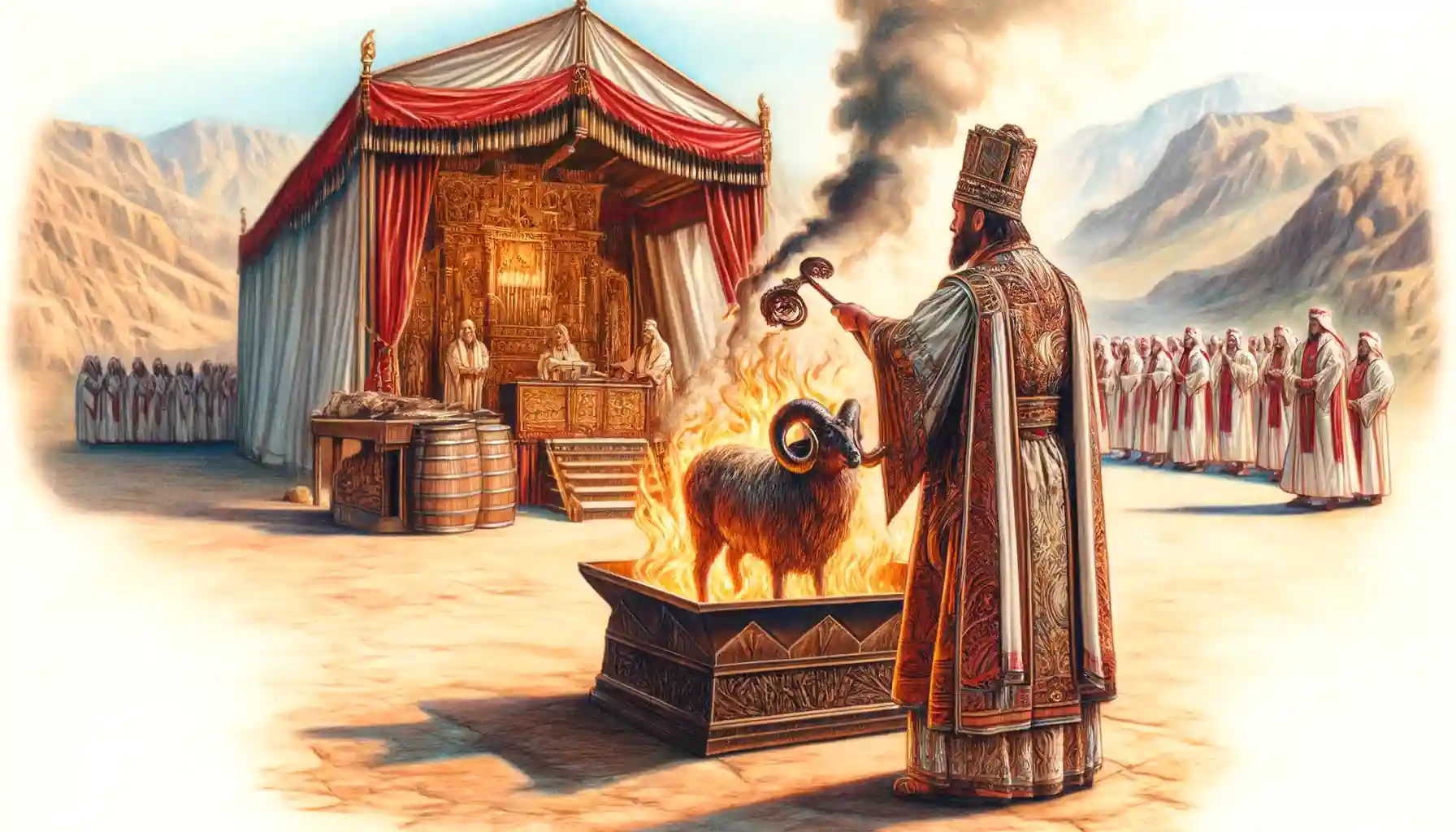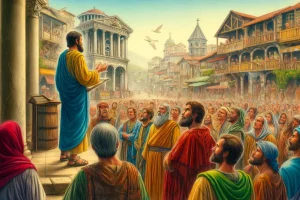
The Book of Leviticus
The Book of Leviticus, positioned as the third book of the Torah in the Hebrew Bible and the Old Testament, plays a crucial role in the biblical narrative. Here are some quick facts about this important scriptural text:
- Name and Placement: Leviticus is part of the Pentateuch, the first five books of the Bible, attributed traditionally to Moses. The name “Leviticus” is derived from the Greek “Leuitikon,” meaning “pertaining to the Levites,” who were the tribe of Israel responsible for temple duties.
- Central Themes: The book primarily deals with the themes of holiness, purity, and sacrificial offerings. It provides detailed instructions on ceremonies, ritual cleanliness, moral behaviors, and the consecration of priests.
- Content and Structure: Leviticus can be divided into several key sections:
- Chapters 1-7 discuss various types of sacrifices and offerings.
- Chapters 8-10 detail the ordination of Aaron and his sons as priests.
- Chapters 11-15 outline laws regarding dietary restrictions and concepts of ritual purity.
- Chapter 16 describes the Day of Atonement (Yom Kippur).
- Chapters 17-27 encompass a variety of laws including moral laws, the sabbatical year, and the Year of Jubilee.
- Purpose and Function: The book serves as a manual for priests and Levites regarding sacrificial rites, ceremonial cleanliness, and holy days. It also aims to instruct the Israelites on living a holy life separated unto God.
- Theological Significance: Leviticus emphasizes the holiness of God and the ways in which the people of Israel were to maintain their covenant relationship with Him. The detailed laws underscore the seriousness of sin and the necessity of atonement through sacrifice.
- Historical Context: Leviticus was likely compiled and edited during the post-exilic period, reflecting the community’s concerns with preserving their religious and cultural identity.
- Modern Relevance: While some modern readers find Leviticus challenging due to its focus on ancient rituals and laws, it remains a vital text for understanding Jewish religious practices and the theological foundations of sanctity and sacrifice, which have profound implications in Christian theology, particularly in the context of Jesus’ sacrificial death and high priestly ministry.
The Book of Leviticus, central to the Torah and deeply influential in both Jewish and Christian traditions, is an intricate text that underscores themes of holiness, purity, and divine-human relationship through detailed rituals and laws. Here is a detailed analysis of Leviticus, exploring its structure, themes, and theological implications:
Structure and Content
- Sacrificial Laws (Chapters 1-7):
- Burnt Offerings (Chapter 1): Complete consumption by fire, symbolizing total dedication to God.
- Grain Offerings (Chapter 2): Represents dedication of the fruits of human labor to God.
- Peace Offerings (Chapter 3): Signifies fellowship and communion with God, involving a meal shared by the altar, priest, and offeror.
- Sin and Guilt Offerings (Chapters 4-5): Provides atonement for specific unintentional sins and purification.
- Detailed Laws on Sacrifices (Chapter 6-7): Instructions for priests on how to handle offerings correctly and respectfully.
- Ordination of Priests (Chapters 8-10):
- Detailed rites of consecration for Aaron and his sons, emphasizing the sanctity and seriousness of the priestly office. The tragic episode of Nadab and Abihu, who offer “strange fire” and are consumed by divine fire, underscores the theme of respecting God’s holiness and commands.
- Purity Laws (Chapters 11-15):
- Dietary Laws (Chapter 11): Designations of clean and unclean animals, reflecting themes of separation and holiness.
- Purification after Childbirth (Chapter 12): Rituals following childbirth, emphasizing renewal and purification.
- Laws on Leprosy (Chapters 13-14): Regulations for diagnosing and cleansing from skin diseases, symbolically linked to sin and impurity.
- Bodily Discharges (Chapter 15): Rules concerning natural bodily emissions, reinforcing the need for cleanliness in approaching God.
- Day of Atonement (Yom Kippur) (Chapter 16):
- The most solemn day of the Jewish year, providing atonement for the priests, people, and the sanctuary itself from all sins, through elaborate rituals including the scapegoat ceremony, representing the removal of sin from the community.
- Holiness Code (Chapters 17-27):
- Sacredness of Blood and Prohibitions on Eating Blood (Chapter 17).
- Moral and Ethical Laws (Chapters 18-20): Sexual conduct, relationships, and penalties for various transgressions, emphasizing social justice and ethical living as expressions of holiness.
- Festivals and Holy Days (Chapter 23): Specifications on observing Sabbaths and festivals like Passover and Sukkot as communal expressions of faith and remembrance.
- Sabbatical and Jubilee Years (Chapters 25-27): Laws on land Sabbath and the Jubilee year, advocating for economic justice and liberation.
Theological Themes and Significance
- Holiness: Central to Leviticus is the concept of holiness—God’s holiness and the call for His people to be holy. This is encapsulated in Leviticus 19:2, “You shall be holy, for I the Lord your God am holy.” The laws prescribed aim to shape a community that reflects God’s character in every aspect of life.
- Atonement and Sacrifice: The sacrificial system detailed in Leviticus points to the seriousness of sin and the necessity for atonement, prefiguring the ultimate sacrifice of Christ, as interpreted in Christian theology, who fulfills and transcends these rituals.
- Purity and Impurity: The distinctions between clean and unclean, pure and impure, are not merely about physical cleanliness but symbolize moral and spiritual purity necessary for the presence of a holy God.
- Divine Presence and Covenant: The regulations ensure that the divine presence remains within the community, guiding and sanctifying the people. It underscores the covenantal relationship between God and Israel, marked by obedience and sanctification.
Conclusion
Leviticus, often perceived as a book of arcane rituals, deeply enriches our understanding of divine holiness and human response through obedience and worship. Its laws, though culturally and historically specific, offer timeless principles about the sacredness of life, community, and our relationship with God, providing a foundational theology of holiness that resonates through both Testaments and into the life of the contemporary church.
Tag:Aaron, Ancient Israelite religion, biblical law, Book of Leviticus, burnt offerings, ceremonial laws, Day of Atonement, dietary restrictions, God's presence, grain offerings, guilt offerings, health regulations, High Priest, holiness, Jubilee, Levites, Leviticus, Moral laws, offerings, Old Testament, Peace offerings, priesthood, purity laws, ritual cleanliness, sabbatical year, sacrifices, sanctuary, sin offerings, Tabernacle, Yom Kippur



